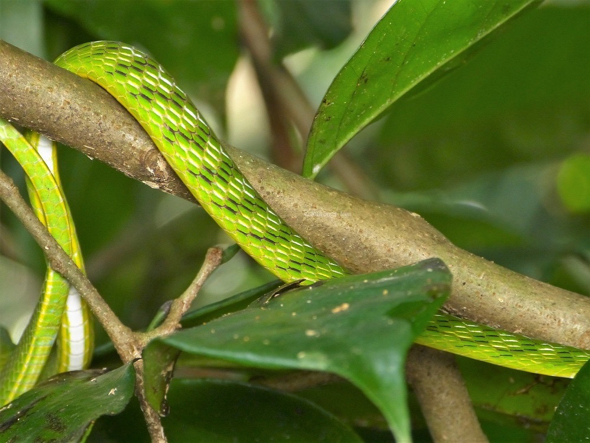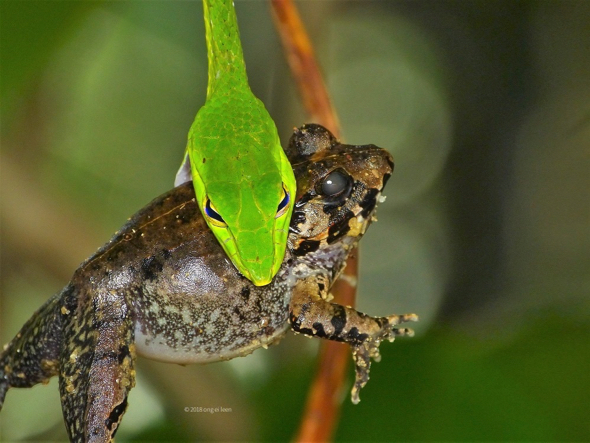“On 23rd September 2018 at 11:00am I (Ei Leen Ong) was with Lena Chow at the periphery of the Central Catchment Nature Reserve dragonfly-hunting when Lena spotted a Bigeye Green Whip Snake (Ahaetulla mycterizans) (above).
“I was alerted to the snake with a Malesian Frog (Limnonectes malesianus) prey at about 11.15am. It had caught the frog and was in the process of swallowing it (above, below).
“At about 11:25am the frog started frothing at the mouth. Lena believed that was the time the venom kicked in (see video below).
“We left thereafter to continue insect-hunting along other trails.
“An hour on, Lena returned to the site to check on the pair. By then, the Bigeye Green Whip Snake had already been consumed the Malesian Frog.
Dr Leong Tzi Ming (one of the contributors to the book on wild animals of Singapore (Baker & Lim, 2008) gives a detailed post-capture account that the video is unable to portray: “An excellent documentation of natural predation in the wild by a forest-specific snake species. As the whip snake is a mildly venomous, rear-fanged hunter, it would take some time for the frog prey to be overcome by the venom. So in the meantime, the frog has inflated itself as a deterrent to being consumed. But eventually, the snake’s venom would take effect and overcome the frog’s nervous system, causing it to deflate and release the air from its lungs. Although the snake’s head and neck seem relatively narrow, it would still be able to swallow the frog by dislocating its jaws and stretching the skin and muscles of its neck, a remarkable feat which many snakes have perfected. If humans possessed this skill, then we would be able to swallow an entire roast duck!”
Ong Ei Leen with Lena Chow & Dr Leong Tzi Ming
Singapore
11th June 2019
Reference:
Baker, N. & K. Lim (eds.), 2008. Wild animals of Singapore: A photographic guide to mammals, reptiles, amphibians and freshwater fishes. Vertebrate Study Group, Nature Society (Singapore). 180 pp.












